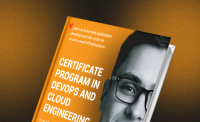PaaS full form is platform-as-a-service. It is a cloud computing solution where another party offers any application software platform. It is more valuable for programmers and developers as it allows users to run, develop, and monitor their applications. They don’t need to build or maintain any infrastructure. Here is a comprehensive list of characteristics and features.
- Excellent infrastructure
- Monitoring and management tools
- A speedier solution that cuts time and money
- Affordable access to various resources
- Cost-effective and simple scalability
- Lower expenses
- Improved flexibility for developers
- Application development tools
So, what is PaaS? PaaS tools are usually required for application development. So, they might be referred to as application development tools.

PaaS in cloud computing doesn’t replace any organisation’s IT infrastructure needed for any development. But it is offered through the hosted infrastructure of any cloud service provider. Users access them via a web browser.
Did you know?
PaaS in cloud computing can also be delivered through hybrid, private, and public clouds to deliver services like Java development and application hosting. So, PaaS cloud services also encompass the following:
- Web service integration
- Application development and design
- Development team collaboration
- Database integration
- Information security and more
What is PaaS, and how is it connected to automatic scaling? Autoscaling is a significant cloud computing specification that enables companies to scale PaaS cloud services like virtual machines or server capacities. All these are based on the defined solutions like utilisation or traffic levels.
So, PaaS in cloud computing performs scaling because it can modify the resources allocated to specific server components. It’s a dynamic and continuous method that enables the platform to assess system demands before distributing server resources without manual intervention.
A PaaS provider will offer sample code & pre-built applications to kick-start the development procedure. Leveraging such a platform will help eliminate the complexity and expense associated with purchasing, managing, and configuring the hardware or software for any custom-built apps.
In simple words, PaaS in cloud computing assists the development team in saving money and time. Besides, it also allows businesses to focus on designing apps & services that add value to customers.
PaaS in cloud computing services can transform a conventional web app with multi-tenancy. Put simply, multi-tenancy allows for the deployment of a single instance of an application that can be used by multiple customers or users at once. So, the software’s single instance runs on the server, thereby accommodating various tenants.
Platform as a service PaaS is the complete and comprehensive deployment and development environment in the cloud. It comprises resources enabling you to offer everything from simple cloud-based apps to complex and sophisticated cloud-enabled ones.
- Integration with other services
Providers of PaaS cloud services mostly maintain databases. Besides, they can also provide the customer with the organisation’s developers considering specified database management and monitoring tools.
- Vendor-managed infrastructure
PaaS in cloud computing includes everything the IaaS includes, but the only difference is that it has other features incorporated within. So, this means that PaaS providers can manage servers, data centres, networking resources, and storage. It can also include the portal, and UI users employ for interacting with Paas cloud services and infrastructures.
With the PAYG or pay-as-you-go pricing model, users can pay depending on the amount they consume. For instance, a cloud storage service provider may charge depending on the amount of used storage. With PaaS in cloud computing, users have to pay on a pay-as-you-go basis.

Click on the link to discover the difference between the iaas paas saas cloud service categories.
- Support for multiple programming languages
The best part of implementing PaaS in cloud computing is that it supports a wide array of programming languages. PaaS providers offer different programming languages for developers to create different apps. A few programming languages offered by PaaS are Ruby, PHP, Java, Go, and Perl, to mention a few. These languages are used for IoT app development & real-time processing.










